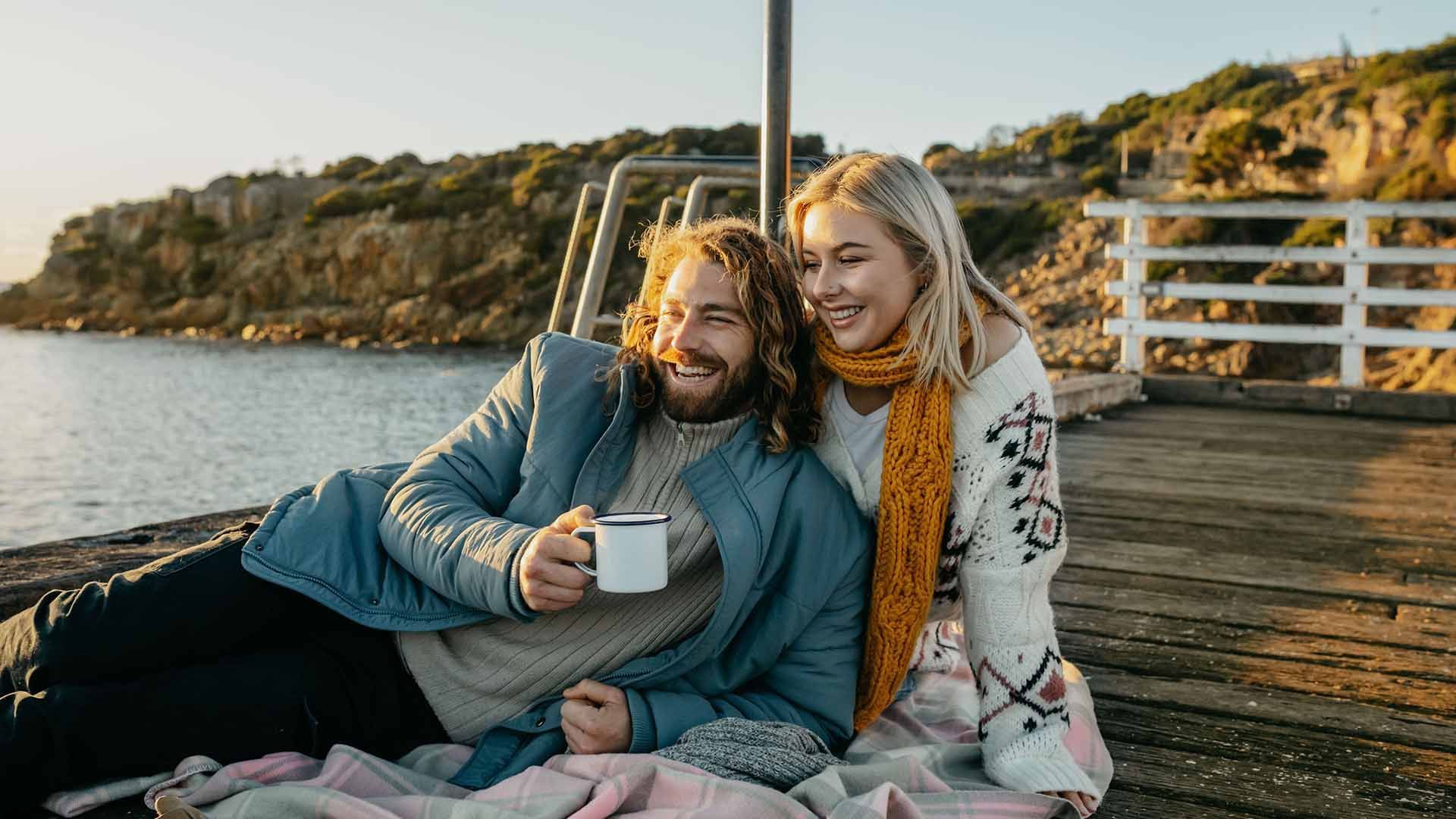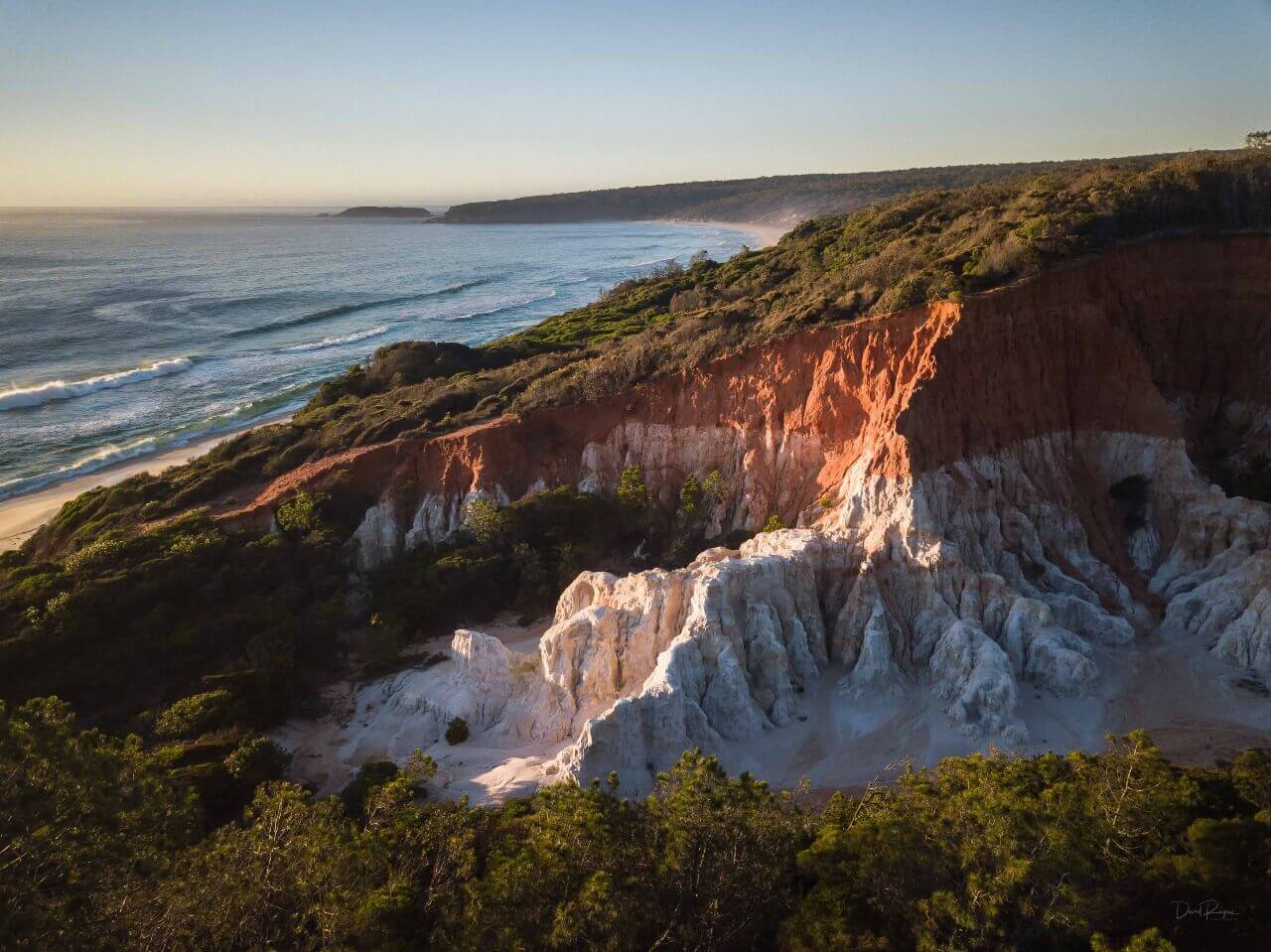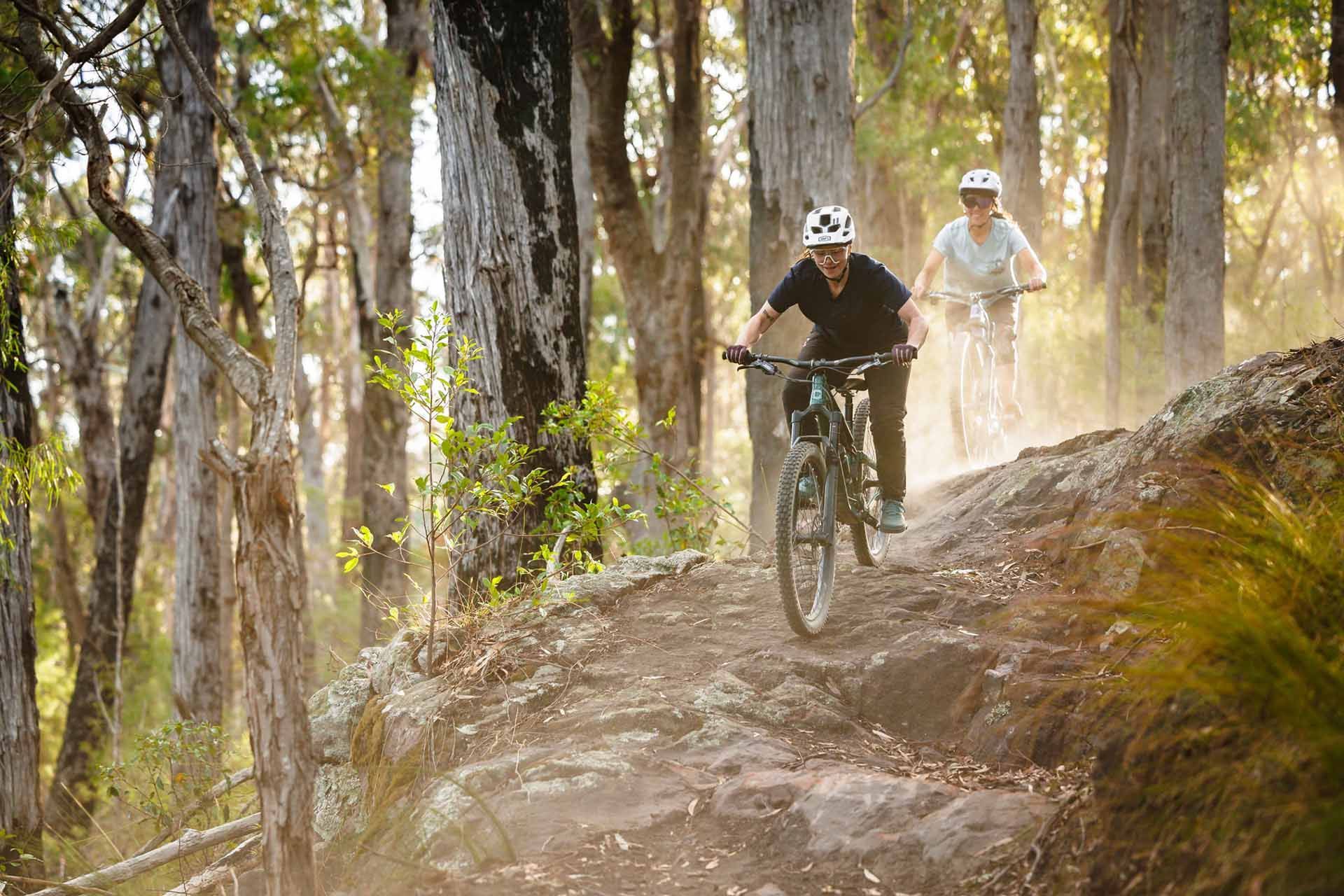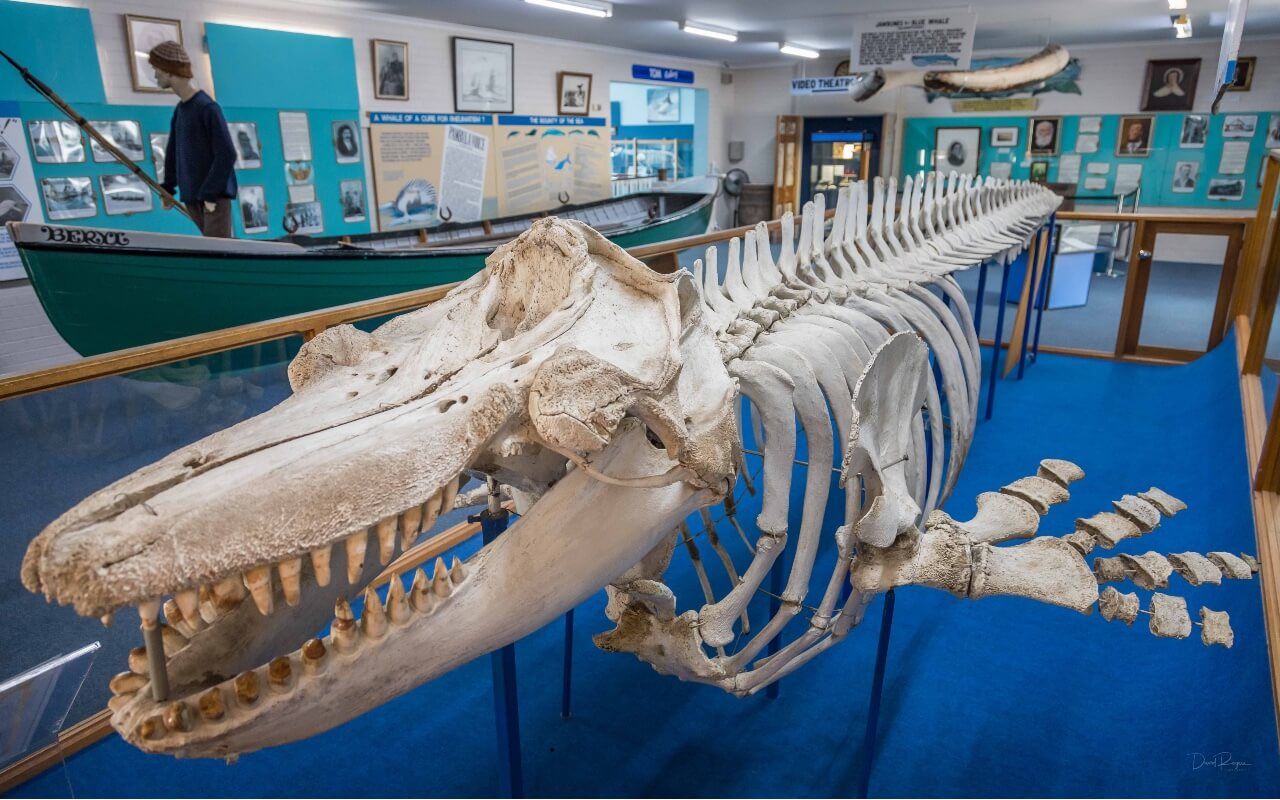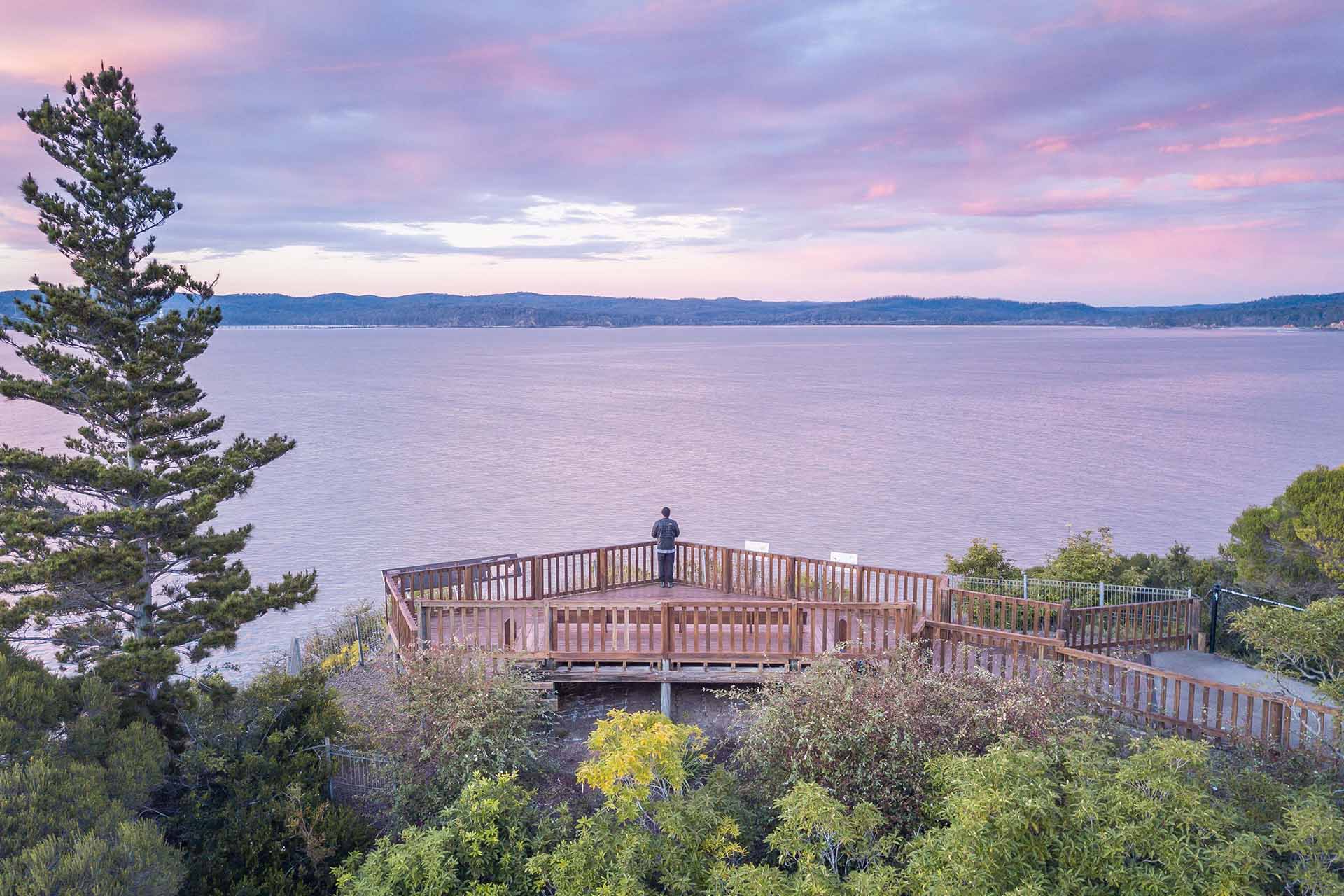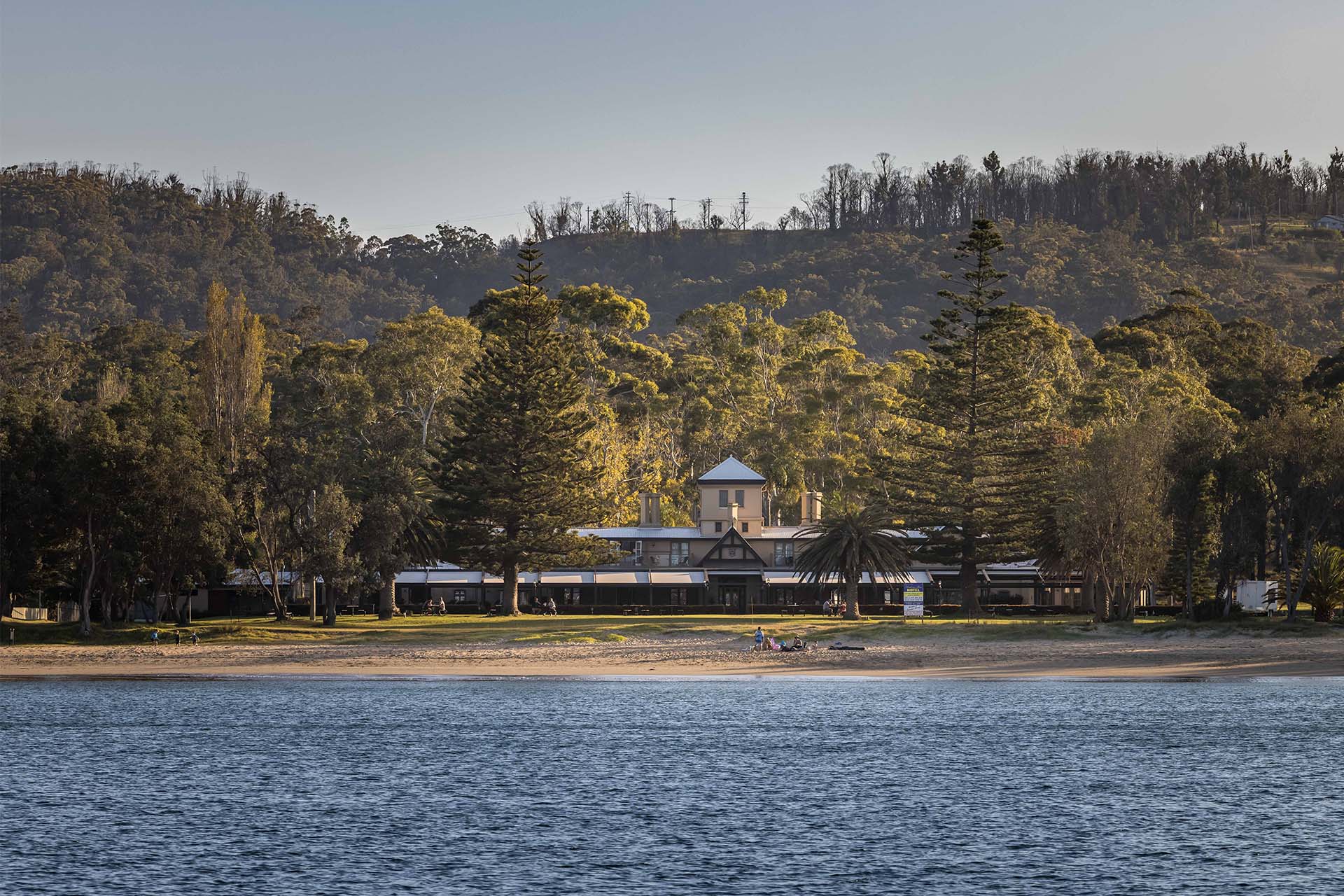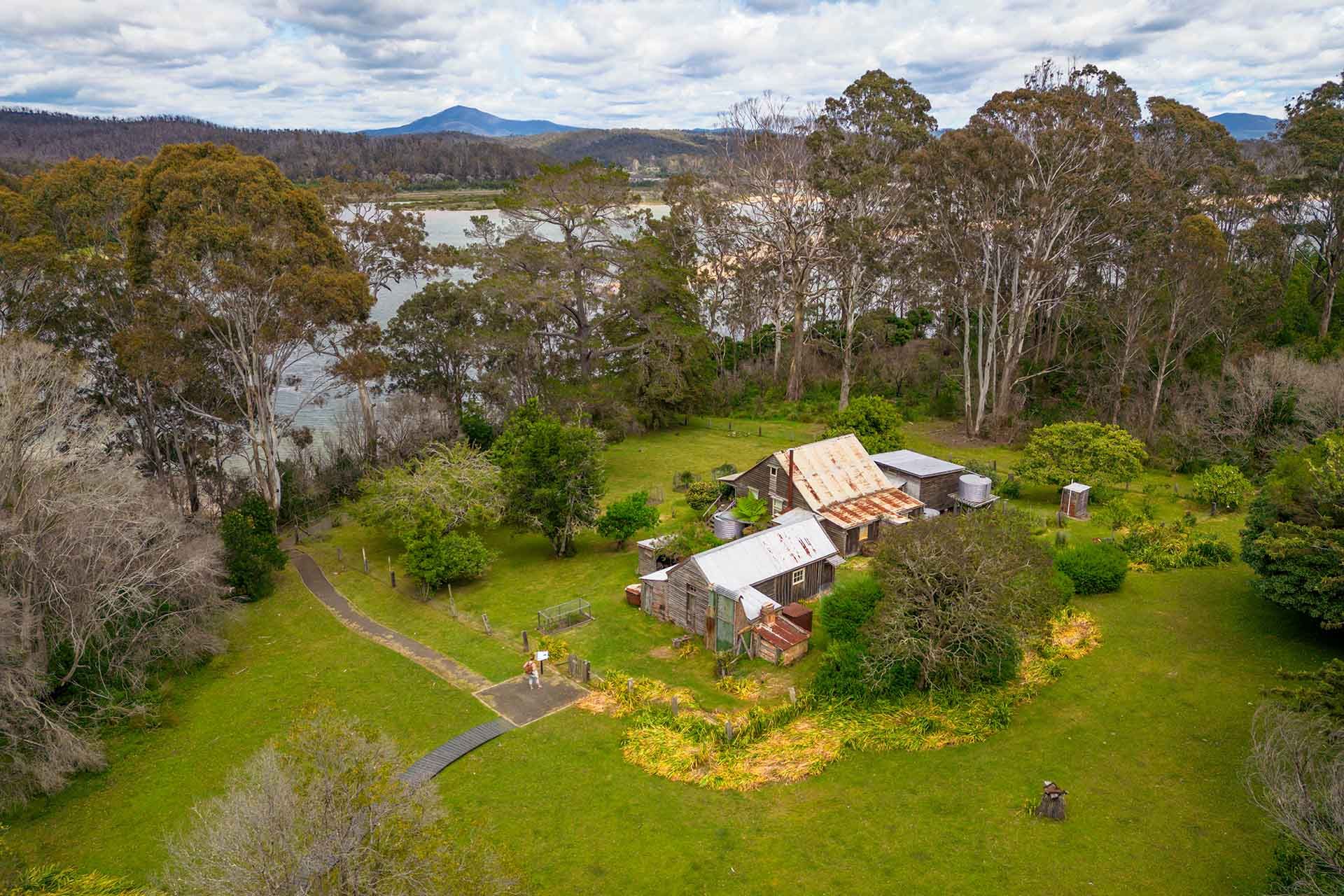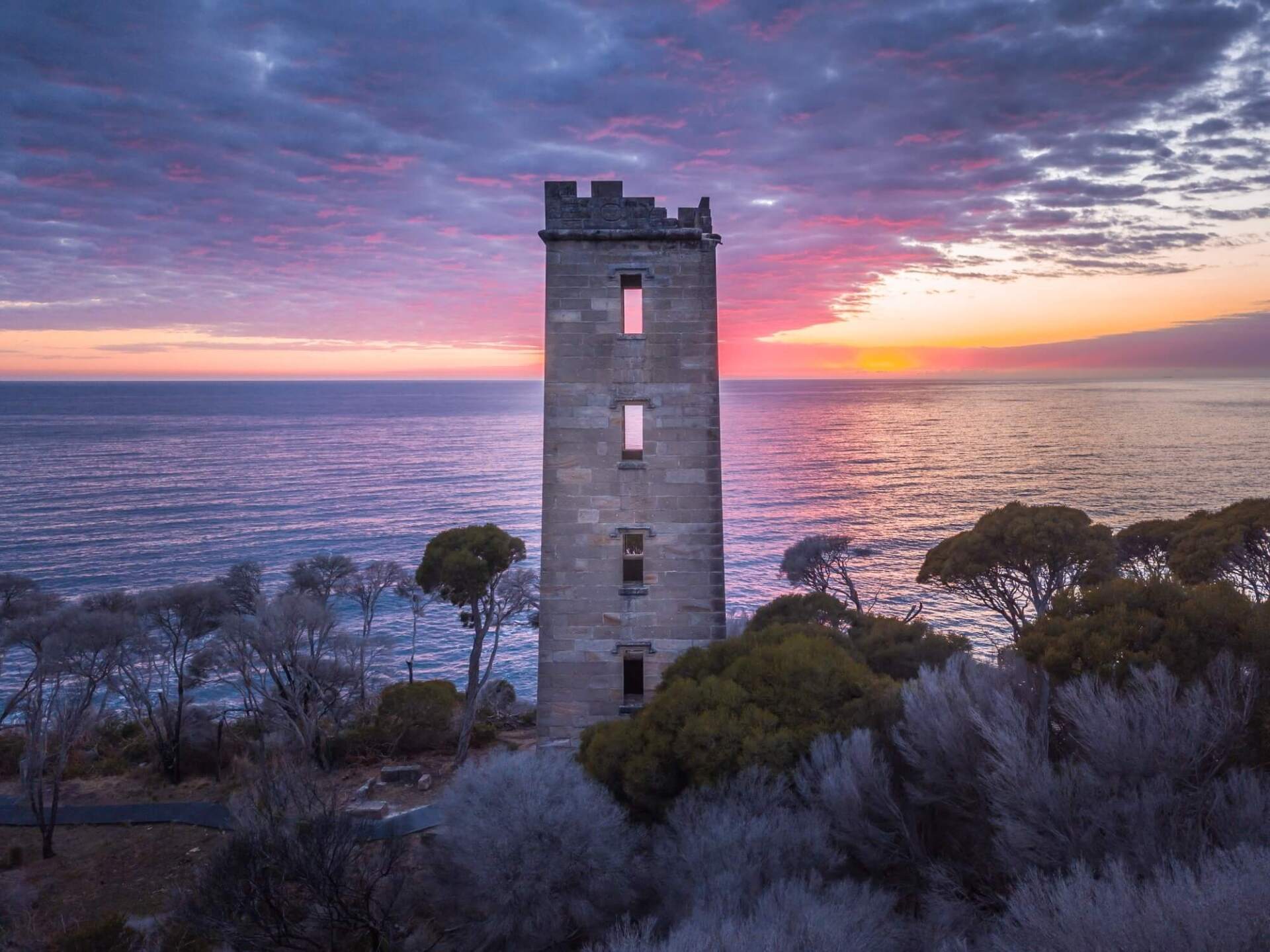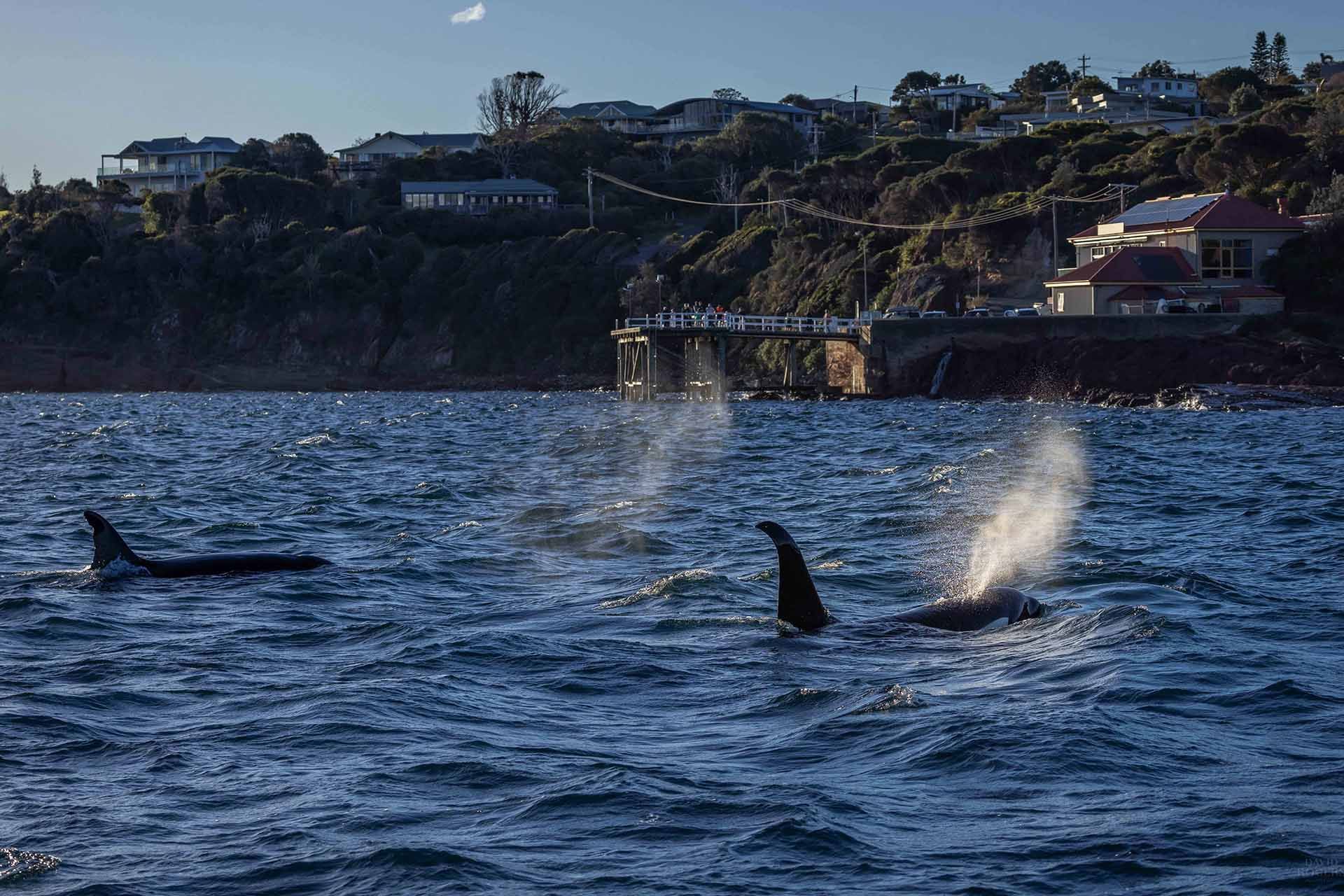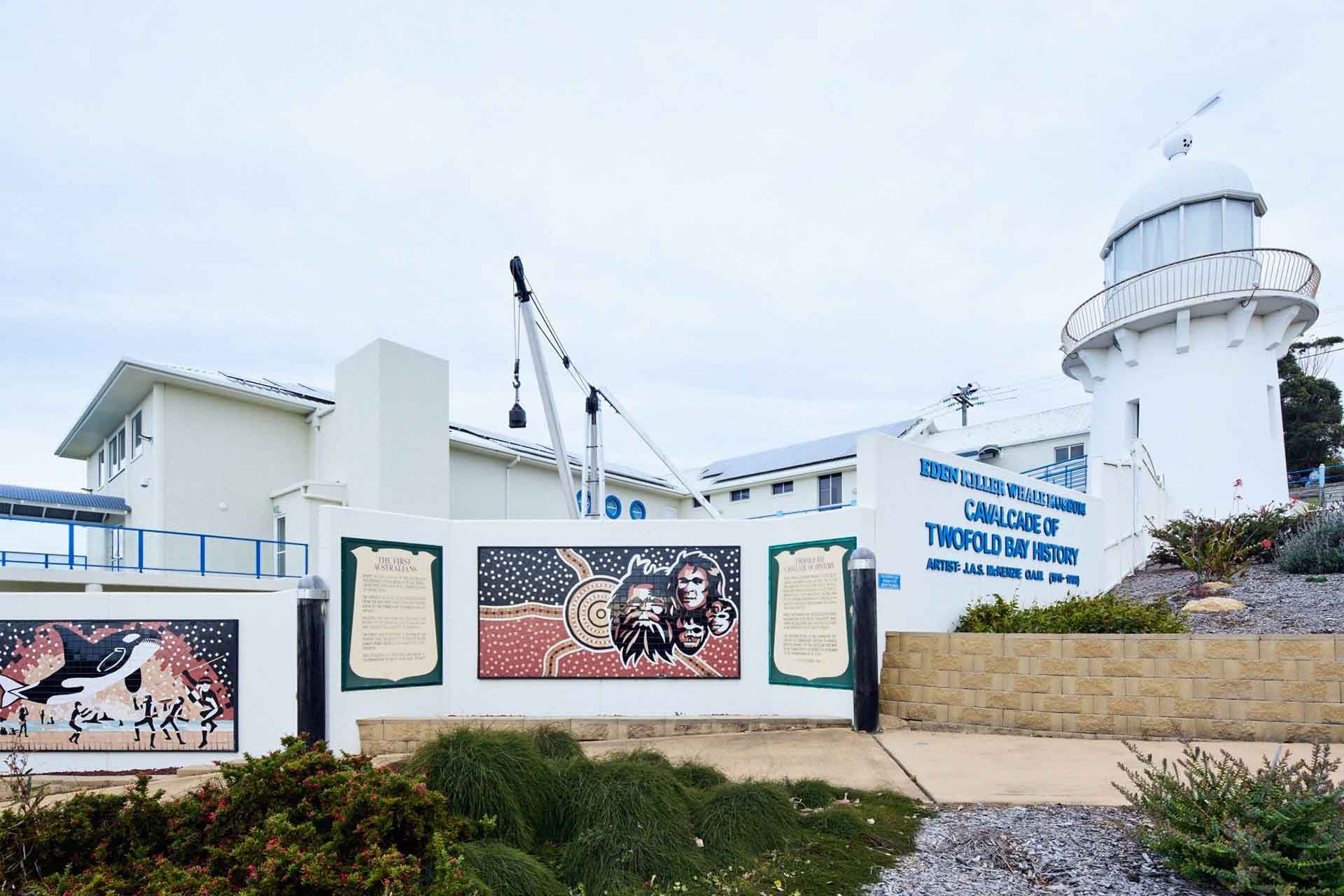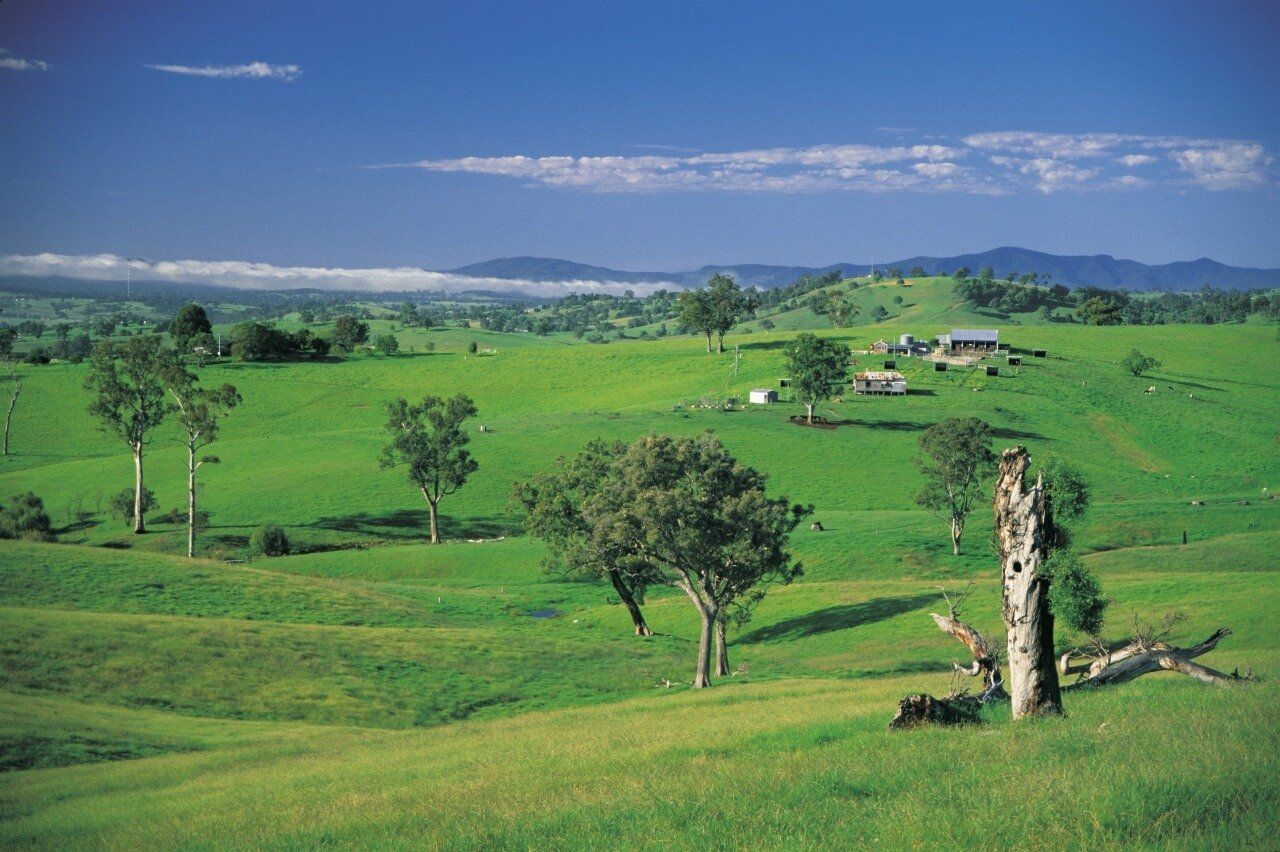Explore the Killer Whale Trail
Take a day trip back in time
Take a day trip back in time, when boats were made of wood and men were made of steel! It’s a trail rich with whales and tales of adventure, a self-drive day tour that takes you to five historical sites set in breathtaking natural surrounds around Eden on the Sapphire Coast NSW.
Journey around Twofold Bay and uncover the dramatic history of whaling from 1828-1930 and learn about the unique relationship between whalers and the wild killer whales (orcas). Between August and November, these sites become perfect vantage points to view humpback whales as they migrate close to the coast. The journey can take half a day, or include a picnic or lunch stop and spend the day.
You will find another chapter of the story at each stop. Bring your smartphone to scan the interpretive signs and view historical photos, video and audio to delve deeper into the story of the killer whales of Eden.
Don't forget to tag us in your photos!
@sapphirecoastnsw #sapphirecoastnsw #sapphirecoastwhaletrail
1. eden killer whale museum
Discover the most incredible human and killer whale partnership ever witnessed on the planet at
Eden Killer Whale Museum. In the 1840s there were reportedly around 50 killer whales spread through three main pods. The museum has records of 21 that were recognisable and known by name. Discover them, along with Tom's skeleton, and artefacts from our maritime, Aboriginal and pioneering heritage.
2. ROTARY LOOKOUT
A blow, a puff of gunpowder and the race is on! From this vantage point it's easy to scan Twofold Bay for whales, and imagine the brutal chase of yesteryear. People would would gather here to watch the killer whale pods harass baleen whales, driving them into ever shallower waters and towards the waiting harpoons of the whalers.
Look across to the other side of the bay and you’ll see Boyds Tower. It was a spotting tower for Davidson’s whale men for almost 100 years, from the 1840s to the 1930s. The family leased the headland, from the tower west to the mouth of the Towamba River. Once a busy inlet with tryworks, the family home, Loch Garra, and rough quarters for employees and their families, today it’s a peaceful sanctuary.
At the tower the men kept a close eye on the killer whales, who were also looking and listening for whales. The orca took up strategic positions in and around Twofold Bay, the third deepest natural harbour in the world, and used the geology to their advantage.
The men boiled the billy for tea, played chess on a board carved into stone and kept an eye on the sea. When the tell-tale whale ‘blow’ was spotted, there was a shout of “rusho!” and the crack of a gunshot would send the crews racing to their rowboats, intent on being the first to the prized whale.
The Davidsons had a huge advantage over other whaling operations. The killer whales’ hunting strategy had evolved to include them, and especially their hand-held harpoons.
The pod would split into groups, some blocked the whale’s escape, some nipped at its fins and tail or tried to smother its blowhole. Others raced to tell the whalers, by breaching and tail slapping at the whaling station, sometimes even in the dark of night.
Most famous of the killers of Eden is Old Tom, who was even known to tow a boat if a rope was thrown to him, and protect whalers if they went overboard.
3. seahorse inn, boydtown
Beermuna (Boydtown Beach) is the beach where the relationship between man and wild orca was born, and the land where an empire almost rose. The Thaua People performed rituals and dances to call and honour the killer whales, their brothers or 'Beowas'. Later Benjamin Boyd, an early European settler and entrepreneur tried to build an empire to rival Sydney, including shore based whaling. What remains is the Seahorse Inn, a grand building now restored to its former splendour and a great spot to stop for lunch.
Long before Benjamin Boyd began building his dream, the waters of Twofold Bay were home to the people of the dreaming. The Katungal (sea coast) group of the Thaua people lived upon this land and it was their special relationship with the killer whales of Eden that began one of the most amazing stories of a co-operative relationship between wild animals and humans.
Killer whales (orcas) would harass and herd much larger whales towards their waiting spears. Before any feasting or ceremony, the tongue and lips of the whale were given to the orcas, or “Beowas” (brothers) to eat. It was believed that when some members of the family died their spirits became a killer whale, and some were named accordingly.
European whalers recruited the Thaua as they were excellent crewmen. The Beowas sensed their friends were hunting the great whales, and the partnership between human and wild animal developed, still with the tongue and lips as their reward. Known to be hard working, skilled with the harpoon and with keen eyesight over long distances, the Aboriginal whalers were involved in all tasks associated with whaling including steersman, harpooner, lookout, oarsman, flensing and the boiling down of the blubber and paid equally by the Davidson and Imlay families.
First Contact
Young explorer and navigator Matthew Flinders was the first European to note whale meat as part of the Thaua’s diet. Seeking shelter in Twofold Bay in 1798, Flinders met a middle aged man while ashore and the two swapped a snack. The older man “…with seemingly careless indifference…” exchanged a piece of whale fat for a biscuit, although neither party found the other’s offering pallatable and descreetly out it away or disposed of it.
Ignorance almost destroys the partnership
When the European whalers first arrived, they were fearful of the killer whales, and considered them dangerous. Much to the bemusement of Aboriginal crews, they would slap the water with their oars and try to scare them from the hunt. Fortunately the Europeans were taught that the Killers were a help rather than a hindrance. Crews that embraced the killers were rewarded in return, and “friendly” boats, such as the Davidson’s distinctive green-hulled vessels, were favoured. In recognition of the exceptional skills of the Aboriginal whalers, families such as the Imlays and Davidsons would accommodate and pay all crew members equally. Early ignorance soon turned to early examples of equality.
1901 – The murder of a Killer
Although killer whales are powerful, swift hunters with no known predators, they can still get into trouble. In 1901 Typee beached himself while chasing a dolphin-like grampus. The Davidson whaling crew saw it and rowed frantically to help. Before they could reach Typee, a drunkard named Harry Silks emerged onto the beach and fatally stabbed the stricken killer. It is not really understood what his motivations were, but the “murder” was met with howls of derision from the whalers – especially the Aboriginal crew and there was much anger in the greater Eden community. Silks very quickly left town on the advice of a local constable.
The killers responded in their own way. They suddenly left the bay and the next year only six returned.
One positive that came from the encounter was that George Davidson was motivated to lobby local authorities to introduce a law protecting the killer whales. No such law was forthcoming, but it shows the depth and strength of the relationship between the whalers and their hunting partners.
4. DAVIDSON WHALING STATION
Davidson Whaling Station tells the story of a unique partnership between the killers of Eden and the Davidson Family. Situated in Beowa National Park, the Davidson's home and the old try works are now a place of quiet and natural beauty. Explore the grounds of Loch Garra, the home of the Davidson Family and for more than three generations, Australia’s longest operating shore-based whaling station. Located 40 kilometres south of Eden, access to the Whaling Station includes some dirt roads.
For more than three generations, the Davidson Family occupied Loch Garra homestead and built the try works on the beach below to process the carcasses of the baleen whales. A good season would see around 8 whales successfully processed for their oil, baleen and bone. It was a tough game, and they subsidised their income by growing most of their own food and running livestock.
Overheads were low, as Alexander’s descendants stayed true to traditional hunting methods for the sake of the killer whales. While deep-sea whalers employed motorised boats and explosive harpoons, the Davidsons rowed (and were sometimes towed by the killers) and cast their harpoons by hand. The only concession was the purchase of a motorboat in 1908 to tow whale carcasses back to the tryworks.
Tours are held here during school holidays and special anniversaries. Visit National Parks online for the latest information.
The day George walked on a Whale
In 1910, a cricket match was about to get underway when the familiar call of “Rusho” from the lookouts halted the game and the crews rowed out to a particularly feisty whale. With the killer whales harassing it, the whale doubled back and launched out of the water beneath the Davidson’s small green-hulled whaling boat. As the boat rose out of the water, George Davidson leapt out of the boat and onto the whale’s back to shove the boat into the sea before it was upended. The feat might be considered a tall tale if it weren’t confirmed by Roy Hordern, a visiting gent from Sydney who was on board the tiny whaling boat that day.
The strange smelling “cure” for rheumatism
Residents of the hamlet of Eden often considered the finely dressed, urbane visitors from Sydney peculiar in some ways, but a visitor to the Davidson’s Whaling Station left them scratching their heads in disbelief.
George Arnold of Darlinghurst had heard rumours that immersing oneself fully in the putrefying warmth of a whale carcass could alleviate the crippling symptoms of rheumatism. In pain and desperate for a solution, he asked the whalers for help. After more than an hour standing in the 40º C heat of the putrefying carcass, Mr Arnold did report an improvement in his plight, but the price for this was that he emanated a stench that lasted for well over a week. This “treatment” became fashionable, and for some time visitors from near and far travelled to Eden to experience the healing power of standing neck deep in a rotting whale carcass.
The story ends and the legend begins
The special relationship between man and wild animal eventually became a relationship between a single whaling family, the Davidons, and a small pod, until in 1929, Old Tom passed away. Old Tom’s Skeleton can be found in Eden’s Killer Whale Museum, a short drive from here.
“Oh no, what have I done?”
Logan breaks “The law of the tongue.”
Whaling in Eden ceased in 1930. But one incident prior to that contributed to much tension in the whaling town. John Logan, a neighbour of the Davidsons, tried to take a humpback without leaving the lips and tongue for the killers as was customary. Old Tom, the most famous of the killer whales, is rumoured to have grabbed the tow-rope in defiance, and lost some teeth in the process. The struggle was won by Logan who returned with the carcass but according to his daughter, who was on board at the time, he lamented, “My God, What have I done?” When Old Tom washed up dead some time later, the Killer Whale’s mouth was riddled with abscesses around the lost teeth. This may have contributed to starvation and his eventual death.
Old Tom finds “Young Jack”
George Davidson survived swampings and capsizes and even rode on a whale’s back when his boat was lofted from the water by an enormous humpback (hence his nickname “Fearless”). His son Jack, however, was not destined for such luck. An experienced whaler of 15 years, Jack Davidson was crossing the Kiah Inlet bar with wife and children in 1926 when their boat breached on a wave and was swamped. His wife Anne survived but Jack and their two children were lost to the ocean, practically on the doorstep of the Davidson family home. A search found the bodies of the children a few days later, however Jack’s body could not be located. Old Tom, the killer whale was seen circling in the vicinity of the accident, but not much was thought of it as the area had been thoroughly searched. Eventually Tom returned to the killer pack and continued helping whalers with the hunt. It wasn’t until a few more days passed that Jack’s body was spotted where Old Tom was circling so fervently. Could it be that he was trying to alert the crews as to the location?
What is a killer whale?
Highly intelligent creatures with complex social systems and structures, Orcinus Orca are not whales but the largest of the 35 members of the dolphin family. They have no known predators and live on a diet that includes fish, birds and marine mammals such as sea lions, seals, walruses and whales.
5. boyds tower
From Boyds Tower, gaze out to sea and back in history when boats were made of wood and men were made of steel. Set deep in a gnarled tea tree forest, this imposing sandstone tower was built in the 1840’s. Originally designed to be a lighthouse, it was never approved for such use, but did become a key lookout point for whalers to spot passing humpback and right whales. Sometimes the whales were being hunted before human eyes could see them. The Killer Whales of Eden would signal to the whalers when whales were about with “tail flops” and would go to work harassing and weakening their prey while the whalers rowed out to chase them down.
From this lookout, whalers would wait and keenly watch for the telltale spout as a whale surfaced to breathe. The hunt would often be underway before a whale was seen by human eyes. Killer Whales (Orcas) would harass the whale towards the shallower waters of Twofold Bay. The Killers would then alert the human whalers to the presence of the whales with tail flops and leaps that could be seen and heard over long distances.
In this rare example of wild animals co-operating with humans for mutual benefit, the killers were rewarded with a feast of the whale’s tongue before the whalers towed the animal to shore. This was known as the “Law of the Tongue”.
At the site you’ll find two lookouts facing south and north. Both are perfect vantage points for watching whales from Aug-Nov.
The largest ever whale harpooned
The largest whale ever harpooned by hand was captured within the waters you see around you. In 1910, Archer Davidson standing in a rowboat less than 30 ft long harpooned a Blue Whale 97 feet long and as large as 27 elephants.
What happened to the killers of Eden?
“Old Tom” died in 1929 and by 1930, whaling ceased. Theories abound as to why, the Killers left Twofold Bay, but a combination of a dwindling food sources, the death of pod leaders and a cessation of whaling activity may all have been factors. Killers were spotted returning to the bay about 15 years after the death of Old Tom, and they can be seen entering Twofold Bay again. Fittingly, killers were spotted in Twofold Bay within sight of Boyd’s Tower on the 80th anniversary of Old Tom’s death.
Who were the whaler’s companions?
The Whalers could identify the Killers by their distinctive dorsal fins and named them Old Tom, Big Ben, Little Ben, Typee and many others – such as Charlie Adgery were named after the local Aboriginal whalers who had passed on. See images and know more about the Orcas here
Whalers and killers
Not all the whalers knew the killer whales were helping them. The indigenous whalers of course had maintained a relationship with the whales, and were puzzled as to why the early European whalers would strike out at the whales with their oars in fear.
Photo: Orcas in Merimbula 2023 by David Rogers Photography, on board Sapphire Coastal Adventures
more stories
The Finback Whale that broke the wharf and sank a man’s dreams
In the early 1900’s, the killer whales herded a large Finback Whale into the Eden harbour. Before the whalers could close in on it, the whale was so harassed and distressed by the orcas, it struck and damaged the wharf before colliding into a yacht moored in the harbour. The yacht then sank in shallow water and its owner was gravely injured while trying to recover the uninsured vessel. Not long after this setback, the owner passed away depressed and destitute. This tragic story illustrates the risk, hardship and difficulty of living in such a time.
The oldest known human and wild animal hunting partnership
Killer Whales are highly intelligent, social creatures. They are not whales, but the largest of the dolphin family. There is no real evidence of the European whalers “training” the whales to support them in their whaling, but there is a long history of the indigenous Thaua people working with the whales and interacting with them. Accounts of whale dances and ceremonies are still recalled by remaining Thaua elders. While whaling began in 1828, it wasn’t until 1844 that the stories of the Killers of Eden began to appear in historical accounts.
The death of Peter Lia
If whaling in small rowboats seems dangerous, imagine hunting down a giant whale at night. On the evening September 28 1881, a crew harpooned a large southern right whale. The whale doubled back and then dived, hitting one boat with its tail and splintering it into two. Peter Lia, a 22 year old Norwegian was in the wrong place at the wrong time and was killed. This was the only recorded incident of a European killed while actively engaged in whaling from this time, however there are number of brave Aboriginal whalers who also lost their lives, but no records of these deaths are in official accounts.
more trail information
What to take
- Wear sturdy walking shoes, and wear a t-shirt with warm and waterproof layers on top.
- Drinks and snacks.
- Insect repellent in the warmer months.
- Camera, smartphone with QR code reader (not necessary, but can be used to access images, videos and extra historical content by scanning the interpretive signage on the trail).
Tips for driving on dirt roads
The drive is mostly on sealed roads however the final couple of kilometres to Boyd’s Tower and Davidson Whaling Station are well maintained dirt road. Drive slower than you would on a sealed road, stay in your lane and allow plenty of space between you and other vehicles.
Watch the ABC documentary
In an ABC TV documentary, Killers of Eden, the filmmaker, Greg McKee set out the case for his belief that the Aboriginal people of the far south coast had collaborated with whales for at least 10,000 years.
Then, from the 1840s, the European whalers picked up on the relationship, engaging many Aboriginals in the whaling crews.
Share
